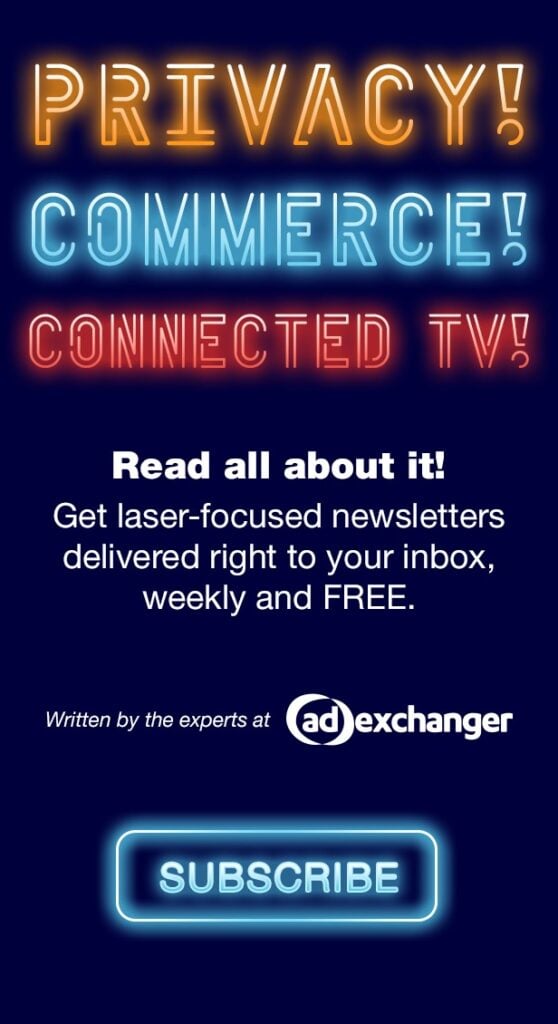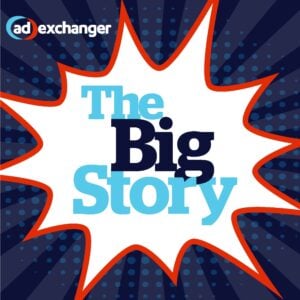 Last week, newspaper-publisher-backed ad optimizer quadrantONE unveiled three new audience targeting tools in partnership with data management marketing specialist Acxiom.
Last week, newspaper-publisher-backed ad optimizer quadrantONE unveiled three new audience targeting tools in partnership with data management marketing specialist Acxiom.
We spoke with Mario Diez, the CEO of quadrantONE, which is a joint venture among The New York Times Co., Tribune Company, Hearst and Gannett, about the new tools and why it pulled in Acxiom to help on targeting.
AdExchanger: What’s your sense of how the display market is doing these days? And how well-positioned are newspaper sites, given the prominence of Google and Facebook?
Mario Diez: The display market is thriving. But, display has been taking a lot of unnecessary heat as of late due to the fact that it’s thriving through new means. You mention Google and Facebook eating up display market share of display – the standard answer to why that is has typically been about eyeballs. But that’s just one part. If you look at our industry, you’ll see that all the companies have something in common. They are providing a means to more intelligently and efficiently power the process and distribution of advertiser messages. Meanwhile, the companies that are struggling with display remain stuck in the old model of pushing “holes” on pages to brands.
While both Google and Facebook provide massive reach, what they both lack is real content. I’m talking about the kind of content that consumers want to read every day and the content brands have been aligning themselves with for years. Anyone who thinks that content is less relevant than scale is mistaken.
This is a key reason why I remain so bullish on quadrantONE and the sites and companies we represent. The enormity of intelligence the news publishing industry routinely gathers is an asset that is yet to be fully realized. When combined with trusted and branded environments that go deep into local markets, we’re able to create tremendous opportunities to help brands localize their national strategy.
What can you tell me about the distinct features of the three ad management solutions — Prime, Trio, Montage — that were unveiled a few days ago?
We’d heard repeatedly from the agencies and brands we work with that they love the audience that the aggregated local news channel brings together. We’d also heard in the same conversation the need to scale more of the digital ad tools to enhance the media performance and impact of the brands investment across our affiliate partners. So, we developed these solutions — Prime, Trio, and Montage – as simple answers to customer demand.
At the core of all there of theses ad management solutions is the intelligent use of data, Whether that be our first party proprietary data, clients data, or data obtained through third parties, the question we want to help marketers answer is “How can I use data to inform, measure, and optimize my programs to meet my desired ROI?” Marketers have long valued their own insight on their customers over third parties, we now have a solution for them to on-board this data across their local media investment with scale. Any national brand who has tried to go deep into multiple markets has always faced challenges around creative and localized messages – these are just a few tools to help them make things easier and drive better results.
Do these three products complement or alter quadrantOne’s existing offerings? How?
They complement our offerings. Mark Dillon, who joined us a little over a year ago as SVP Sales, has a simple expression that we feel is a core differentiator: Great data + Great inventory = Great results. Others have one or the other, but we sit in a unique position between national brands and some of the world most recognized media publishing brands, with the unique ability to marry the branded, premium inventory and the high demographic data. Our position in the marketplace has always been to service National brands who value local footprints by facilitating local media buys, through buying efficiencies and the use of data and technology. To do that our offerings have always been driven by the media strategies national brands value most: buying efficiencies, data, and exceptional client service.
I generally think of quadrantOne as a solution for newspaper sites’ unsold inventory. Is there more to the company’s story? Is my perception wrong?
Unfortunately this perception is outdated by a few years. While we do provide services for newspaper and other local websites unsold inventory – this is not the primary role of the company.
We believe that there are two types of premium sales. The first is the highly customizable, content integration, high-touch, site specific type buys. The second is running a premium program for marketers. And this speaks to why some people are missing the mark on display. This second premium channel focuses on high-touch, large scale programs where sales and account teams need to work with brands where there is front end research, analysis throughout the campaign ending with back end measurement on what worked and what didn’t. This may include on-boarding customer data, test and control messages, providing in campaign optimization associating the right message with the right target.
These programs are at least as impactful as traditional high impact units, and comprise the majority of our business. It was only natural over time due to the scaling of demand that a lot of news sites then asked for additional services such as managing their open market. We are seeing success with our affiliate partners because they can now devote more resources to the business that’s endemic to them (local markets/advertising/solutions) and which enable quadrantONE to driving meaningful impact in the national markets whether it is premium direct sales, RTB, or the open/unsold market.
Why did you choose Acxiom as a partner? What do they bring to the table that you didn’t have before?
Acxiom’s history in the data management arena and their recent initiatives in the addressable media space, made them a natural fit to help us bring an ad solution like Prime to the local marketplace. The simple fact that they are partners with most all of the same brand partners that we continue to work with and we had heard repeatedly from these brands the need to do more with their own data asset to better inform their media decisions. It wasn’t enough to simply offer geo-targeting for national brands investing in local channels – we needed to go deeper and partnerships like these gives us the opportunity to truly help national brands understand more about their media investment and surround insights than ever before.
What’s your take on DMPs? Do you use them, avoid them?
At some point, the market of buying is going to shift. A brand is going to say to a media company or vendor that they know more about which customers and potential customers they want to reach than anyone else can tell them. No longer will 3rdparty proxies be a driver for media selection. This data asset on the client side will live in what we call today some form of a DMP. The brand will then directly link that to the media partners they deem worthy. Any publisher who does not have the ad management tools to sync up will be left to throw all of their inventory over to the “vanilla” pond where there will be limited value as there will be no data tied to the media. AdExchanger’s recent article interviewing BMO’s Dan Salmon is a fantastic piece about this same concept of a hub.
So to answer your question, I couldn’t agree more with [Mindshare’s] Steve Plimsoll on the forward opportunity for DMP’s. It’s another reason why I’m so bullish on quadrantONE and the news industry given its offline/online assets. For any company in the media ecosystem, the data and insight on your audience is the primary asset you own. If you don’t own it exclusively, or you don’t have the tools to manage it effectively, you’re in a losing proposition.
Has your private exchange exceeded, met or fallen below your expectations? How do avoid a situation where advertisers / agencies bypass your sales team in order to buy on the exchange?
It has exceeded expectations all around. We are providing better inventory and insights to more marketers than ever before. Avoiding sales channel conflicts has been simple given the tool set and controls we have with managing buyers. That’s not to say that it doesn’t happen, but when it does – the benefit is now we can see it, address it and bring a new conversation to the advertiser. Chances are they were looking for a specific audience that they value, and once we’ve uncovered that – most all want more of those audiences and we now have the means to offer them more of that either in a direct or preferred manner. The long term win here is we have the tools to work with brands the way they are buying, and we’re introducing more products with this consideration as we anticipate our continued growth.













